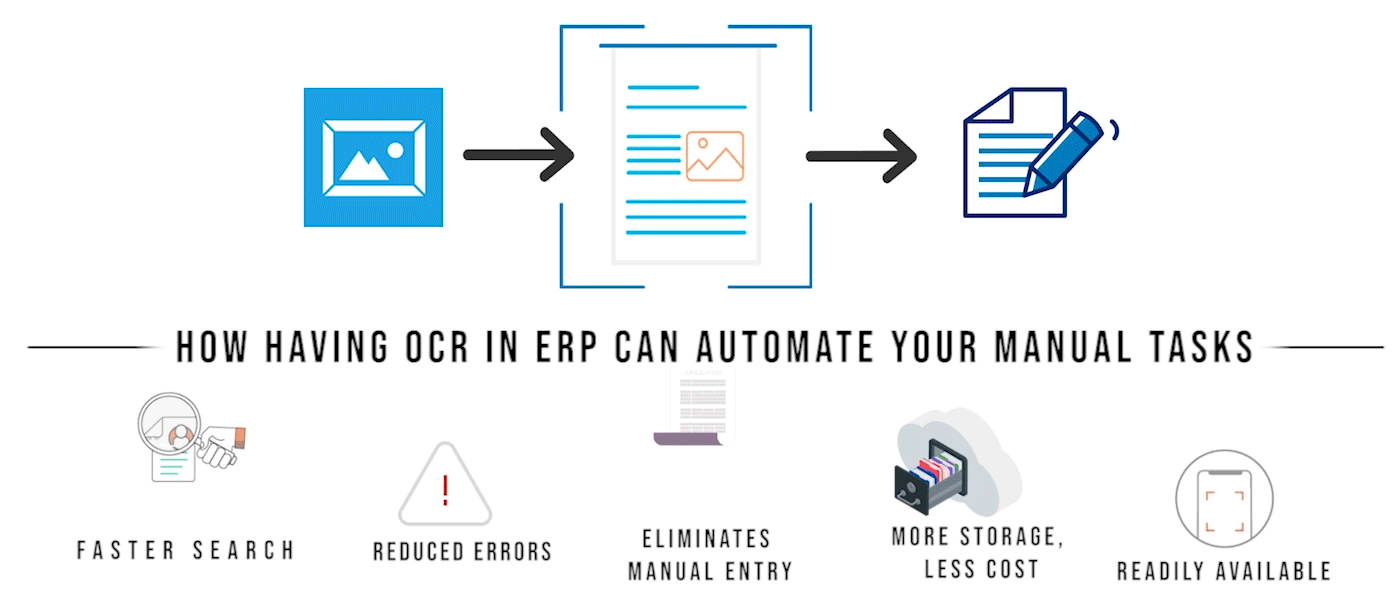How having OCR in ERP can Automate Your Manual Tasks
Category :
Blog posted by : Admin / 28 May, 2019
How having OCR in ERP can Automate Your Manual Tasks
OCR: The All in One solution for converting handwritten text into digital form
OCR has been the talk of technology in today's ERP systems. OCR refers to optical character recognition that let one business to process incoming documents, like customer order pdf, invoices, computerized receipts, and other scanned documents into digital data that can be obtained automatically into organization ERP's system. The data can be edited and searched digitally in ERP. OCR has made it simple for professionals to fill out their digital forms just by scanning the documents and also view & edit the same. OCR has enhanced the data entry process unimaginably while improving the agility on the other side.
OCR works on Machine Learning Application of Artificial Intelligence:
Machine learning is an application of artificial intelligence that provides systems the ability to automatically learn and improve the process from experience without being programmed explicitly. OCR works on the machine learning platform that converts the physical document into machine learning text. First OCR uses a scanner to process a physical or hard copy of the document and then automatically fills the scanned data into the digital form where it is required to be filled. So it avoids any manual entry from the employee which speeds up the data entry process.
Quick Benefits of Using OCR in ERP software:
1. Faster Search:
Many small and medium enterprises have to deal with lots of business data to proceed for further tasks. Therefore the ability to instantly search and fill any data in the ERP system is strongly needed as the inflow of documents and use of ERP tends to be higher in organizations, and most of the daily tasks are executed on ERP. An employee can search for any document and fill the information quickly into ERP. Once the information is stored, the employee can access it anytime just by searching the same.
2. Reduced Errors:
The various organization faces challenges in managing the data which often results in data loss and inaccuracy as the manual correction of data into the ERP system can cause small but potential human mistakes. That's where OCR comes to the rescue and saves time wasted in correcting the simple errors. OCR's data validation eliminates errors and resultant cost. E.g., All the data in an invoice such as invoice no, PO no, vendor no, vendor name, etc. are scanned and validated. OCR reduces errors which could have been caused by employees during the correction. Reduced errors keep the business information accurate in ERP software and make it easy for employees to find any information.
3. Eliminates Manual Entry:
Without OCR in ERP, it is a time-consuming task for an employee to fill all the business information in ERP as one has to type in all the data manually which in some circumstancesƒ can also cause typing error. OCR eliminates manual entry by capturing data automatically through scanning. The efforts and time that employee used to put in to fill the data manually can now be diverted to focusing on core competencies.
4. More Storage, Less Cost:
Every organization aims to have a paperless approach, and OCR in ERP software enables the business enterprise to have lesser documents and larger space. OCR helps in reducing several expenses on printing, copying, and file cabinets. The saved cost can now be invested in a productive area of business, adding up more monetary value in the budget & investment.
5. Readily Available:
Scanned information through OCR can be stored in ERP and accessed from any location. One can retrieve the data as and when needed. OCR makes the data readily available to employees in case of urgency. With OCR, all the scheduled tasks are executed on time so that business stays on plans & strategies to achieve the desired goal within a specified period.








